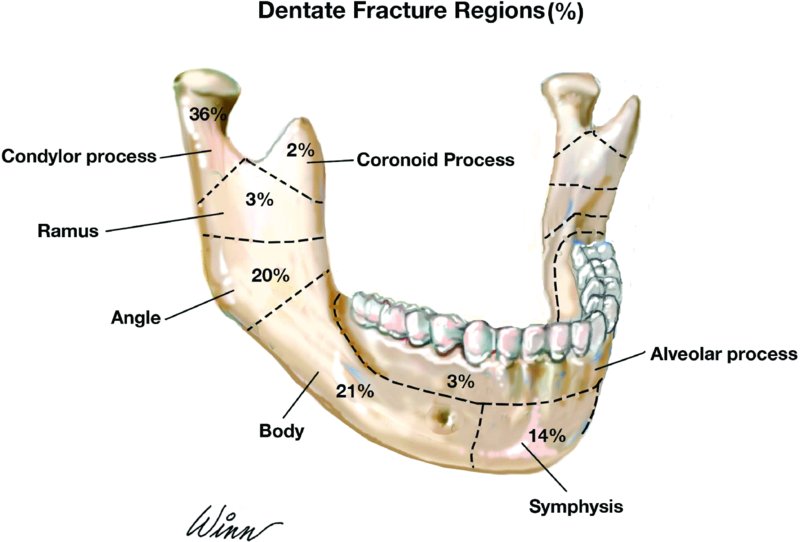
What is Mandible Fracture?
A mandible fracture, commonly known as a jaw fracture, involves a break or crack in the mandible, which is the bone that forms the lower jaw. Mandible fractures can occur due to various causes, including trauma to the face, motor vehicle accidents, assaults, falls, or sports injuries.
How is Mandible Fracture treated?
The treatment of mandible fractures depends on the severity and location of the fracture. In some cases, non-surgical approaches such as observation, pain management, and temporary immobilization with a jaw wiring or a splint may be sufficient for healing. However, more severe fractures may require surgical intervention to realign the fractured segments and stabilize the jaw using wires, plates, screws, or other fixation devices.
Who is a candidate for Mandible Fracture treatment?
Individuals who have sustained mandible fractures, whether isolated or as part of multiple facial injuries, may be candidates for treatment. Common symptoms of mandible fractures include pain, swelling, bruising, difficulty chewing or speaking, malocclusion (misalignment of the teeth), and changes in facial appearance. A consultation with an oral and maxillofacial surgeon is essential to determine the extent of the fracture and recommend appropriate treatment.
What are the benefits of Mandible Fracture treatment?
Treating mandible fractures offers numerous benefits for individuals seeking to restore function and aesthetics to the jaw and surrounding facial structures. Proper treatment can help alleviate pain, restore normal jaw function, improve chewing and speech abilities, and prevent long-term complications such as malocclusion or temporomandibular joint (TMJ) dysfunction. By addressing mandible fractures promptly and effectively, individuals can achieve improved outcomes and quality of life.
What is the recovery process like after Mandible Fracture treatment?
Recovery from mandible fracture treatment can vary depending on the severity and complexity of the fracture, as well as individual healing factors. Patients may experience swelling, pain, and difficulty opening the mouth following surgery, which typically improves over time. It's essential to follow post-operative instructions provided by the surgeon, including dietary modifications, oral hygiene practices, and activity restrictions to optimize healing and prevent complications.
What are the risks and complications associated with Mandible Fracture treatment?
Like any surgical procedure, mandible fracture treatment carries certain risks and complications. These may include infection, bleeding, nerve injury, damage to adjacent teeth or structures, malocclusion, or unsatisfactory aesthetic outcomes. Additionally, individuals with complex fractures or associated injuries may be at increased risk for complications such as temporomandibular joint disorders or delayed healing.
Why choose VMG Hospital for Mandible Fracture treatment?
VMG Hospital in Hisar, Haryana, is a trusted provider of comprehensive care and treatment for individuals with mandible fractures and other facial injuries. Our team of skilled oral and maxillofacial surgeons has extensive experience in managing facial trauma, ensuring timely and effective treatment to optimize outcomes. With state-of-the-art facilities and a multidisciplinary approach, VMG Hospital is committed to delivering compassionate care and helping patients recover from mandible fractures.